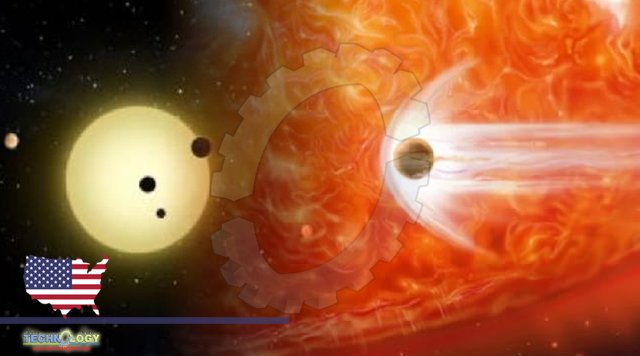Astronomers Reveal New Details of How Stars Devour Planets, Surprisingly, some worlds can survive being engulfed by a sunlike star when it swells to become a red giant

Astronomers Reveal New Details, Astronomers have been witnessing the ends of worlds for millennia. Even in antiquity, sky watchers noted the rare star suddenly bursting into brightness and then fading away over months or years. These outbursts are supernovae, explosive stellar deaths that can also annihilate a star’s accompanying planets. Today modern researchers can see black holes shredding entire stars (alongside any unseen companions) and find evidence for debris from shattered rocky worlds raining down on white dwarf stars, which are the cinderlike corpses of expired suns. Such events only hint at a planet’s death throes, however. Now results from a new preprint study are pointing the way to more direct observations of annihilation, forecasting the types of worlds that can be engulfed by their stars and the resulting boosts in stellar brightness that ensue. Before long, astronomers may actually see the telltale flaring produced during a planet’s final moments as it is swallowed by its star. And they may even find some that manage to survive the fiery stellar plunge. Planetary engulfment “is something that is probably common,” says Ricardo Yarza, first author of the new research and a graduate student at the University of California, Santa Cruz. “It’s also not understood in detail.” Yarza and his colleagues modeled how planets of various masses would interact with the outer layers of dying stars known as red giants.
Astronomers Reveal New Details, Their results suggest that the largest planets—at least 10 times as massive as Jupiter—can survive by blowing off their star’s outer layers, increasing that star’s brightness for a period anywhere between a few hours to a few thousand years. Smaller worlds can cause observable effects, too, such as a brief stellar flickering. But once engulfed, they should not escape a hungry star’s grasp. The team first presented its research at the 240th meeting of the American Astronomical Society in Pasadena, Calif. Red giants are a closing phase of life for most solar-mass and heavier stars; our own sun is slated to become one some five billion years from now. They emerge when a star runs out of hydrogen fuel at its core and begins burning helium instead, releasing excess energy that causes the star to swell to 100 times or more its previous size. As it expands, the star can engulf any close-orbiting worlds. (This will happen to Mercury and Venus.) But as the star puffs up, it tends to expel its outer layers, too, progressively losing mass and diluting its gravitational grip. This allows some planets to avoid destruction by drifting outward in their orbit. (Earth may eventually escape engulfment in this way.) At the same time, this shrinking stellar mass also amplifies the gravitational tug the ballooning star feels from nearby planets, raising tides on the star that can siphon away the tugging planet’s momentum, causing the world to spiral in to its potential doom. But while its fate may seem sealed once consumed by its star, not every planet is destined for catastrophe.
Source: This news is originally published by scientificamerican